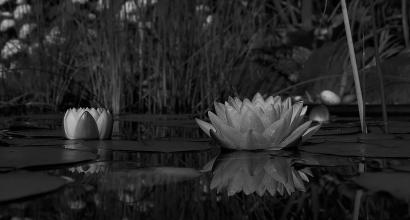As we have seen so far, Sri Vidyaranya’s contributions towards nation building, politics, jurisprudence, agriculture and commerce were in no small measure. However, what people remember to this day are his monumental and lasting contributions in the cultural arena.
Sri Vidyaranya realized that a country, in spite of being economically and militarily powerful could perish in a short time if not culturally sound and strong. As a result, the brother duo of Sayana and Madhava embarked on a movement to rejuvenate Indian culture by galvanizing its multiple facets that were familiar to them. While Madhava-Vidyaranya provided vision and encouragement, Sayana implemented that vision, gathering the support of several other like-minded people along the way.
The people of the Vijayanagara region were wounded physically, mentally and spiritually by the rapacious Muslim onslaught. In order to re-establish faith in their own dharma and establish peace, Sri Vidyaranya commissioned an encyclopedic work known as the Prayashcitta Sudhanidi (meaning: the nectar-ocean of expiation) through Sayanacharya, which among other topics, dealt with rituals countering forced conversion to other religions. This helped alleviate feelings of guilt, hopelessness and inferiority amongst victims of forced conversions while building trust and confidence amongst the people.
While mental confidence was built by the preceding work, the Ayurveda Sudhanidhi, an encyclopedic work on Ayurveda authored by Sayanacharya, aimed to better the physical health of the people. As in other cases, it was Madhava-Vidyaranya that encouraged the composition of this work. The medical fraternity of the day followed the model described by this work, which also enlivened folk medicines.
With the establishment of mental security and physical well-being, Sri Vidyaranya inspired yet another work by Sayanacharya to create value-consciousness in the minds of the populace. This was aptly named Purushartha Sudhanidhi. This work conveys the necessity of the concept of the four purusharthas – dharma, artha, kama and moksha and demonstrates the harmony amongst them. That the universal principle of the purusharthas transcends caste and creed has been amply demonstrated in this work. Sayana and Madhavacharya dedicated their lives in propounding and propagating this great principle. The principle of purushartha shows how the individual, seeking fulfillment through the universal good, becomes instrumental in attaining one’s own salvation. The purushartha principle acts as a lighthouse for seekers and students of values and practice, rta (cosmic order) and truth. This work captures the essence of the Mahabharata and the eighteen puranas - great works of that seer par excellence and exemplary advocate of purusharthas – Bhagavan Vedavyasa. Therefore it acts as a witness to the fact that Sayana and Madhava were in fact inspired by Bhagavan Veda Vyasa.
The same principles were elucidated in a simpler manner in a work known as the Subhashita Sudhanidhi. Verses gathered from vast ocean of Sanskrit literature were classified according to the four purusharthas. While the Purushartha Sudhanidhi was more a technical exposition of the purushartha value-system written for a scholarly audience, the Subhashita Sudhanidhi expounded the same concepts in an attractive literary way suitable for lay people. Such a purushartha-based collection of maxims and verses is a unique one in all of Sanskrit literature.
After establishing the purushartha value system in the minds and hearts of the people, Madhavacharya had Sayana author a work focusing on the theory and the practice of yajna. Yajna, deriving from the dhaatu – yaj (meaning: to worship यज देवपूजासङ्गतिकरणदानेषु,) is at the centre of Indian thought and has been elaborated upon by Sri Krishna in the Bhagavad Gita as well as by Vedic seers. Yajna provides the means to simultaneously achieve worldly and spiritual aims as well as helps attain the purusharthas. It was with this understanding that the work Yajnatantra Sudhanidhi was composed. It should be noted that yajna should not be viewed from just the prejudiced perspective of priest-craft, but from a comprehensive philosophical standpoint that shows the all-pervading nature of this perennial philosophy.
A similar goal was envisioned in the composition of the grand commentary on the complete extant Vedic literature – the Vedartha Prakasha, which can be rightfully called as the zenith of the exalted achievements of not just the Vijayanagara Empire, but of entire medieval India. The entire Vedic corpus, comprising the four Vedas without leaving a single mantra or a word, has been interpreted in the light of the yajna, while not leaving out the spiritual (आध्यात्मिक) (or the deific - आधिदैविक) perspectives. The work proceeded with Sayana and Madhava at the head of efforts, but with the co-operation of several scholars over multiple decades. The fact that none before or after has attempted such a thorough commentary on the Vedas shows the sheer monumentality of this work – to describe which the adage – न भूतो न भविष्यति – can be safely employed.
A little elucidation will probably not be out of order here. The Vedas are the gomukh to the Ganga of Indian culture and philosophy. In other words, faith in Vedic philosophy and its accompanying rituals is the life-blood of Indian existence. Sayana and Madhava wanted to build the empire of the Vijayanagara on such a foundation. To their credit, this rediscovery of Vedic principles did not end up as fatuous faith or regressive dogma but as an objective, comprehensive and a useful endeavor accomplished in a scientific manner. Any impartial study of this work would attest to this fact. Suffice it to say that the Vedartha Prakasha is a magnificent monument to Indian thought and learning.
Probably more important than the restoration of the Veda to its primacy was the rejuvenation of language, especially Sanskrit, given that it has been the chief carrier of all Indian thought. Language is likened to light and is the vehicle of human thought. It is generally accepted that Sanskrit is one of the most refined, complete, and well-established languages of the world. In no small measure does Sanskrit owe these features to the grammatical system of Bhagavan Panini, especially the system of dhatus (root verbs). Compiling all the forms and usages of more than two thousand dhatus in an accessible form is no mean feat. The Madhaviya Dhatuvrutti, composed by Sayana under the direction of Madhavacharya, achieved exactly that.
Thousands of sentences from dry treatises can fail in effectively conveying an idea. A line of inspired poetry, however, can mesmerize and galvanize its readers. Literature or poesy is aesthetically the richest and most enjoyable of all arts. It is no wonder that empire builders and protectors of culture give literature the highest importance. Aesthetics or Alankara Shastra gets to the heart of appreciation of beauty and artistic taste. It is, therefore, no surprise that the all-encompassing view of Madhavacharya prompted Sayana to compose Alankara Sudhanidhi. This work is a worthy addition to the hallowed aesthetic tradition of Bharata, Bhamaha, Dandi, Vamana, Rudrata, Anandavardhana, Abhinavagupta, Mahima Bhatta, Bhoja and Mammata. It is therefore fitting that erudite aesthetes such as Appayya Dikshita (of the famed Kuvalayananda) have appreciated this work.
The preceding works were composed by Sayana at the behest of his elder brother, Madhava-Vidyaranya, who authored several gems by himself as well. As expected, Madhavacharya authored works on धर्मशास्त्र and पूर्वमीमांसा before becoming a renunciate. It was only after becoming a samnyasi that Vidyaranya authored works on Vedanta. These works will be discussed in the next part of this series.
To be continued...










































